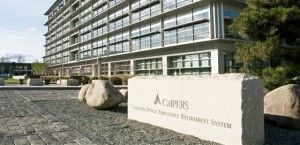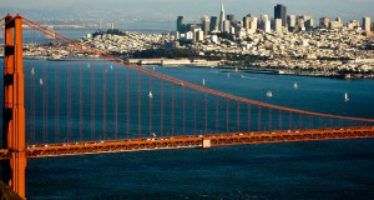Despite Gain, CalPERS Still Underfunded
By LANNY EBENSTEIN
The recent announcement that the investment return of CalPERS for the 2010-11 fiscal year was 20.7 percent does not indicate that it, or other public sector pension funds, are now financially solvent. Indeed, the exact opposite is the case. Notwithstanding the increase in the stock market in the past year, CalPERS and other public sector pension funds are essentially insolvent. Their continued expected rates of return are in the vicinity of 8 percent (CalPERS projects a 7.75 percent return on investment annually). This is unlikely to occur.
Strictly from the standpoint of the stock market, the Dow Jones Industrial Average would have to be at approximately 25,000 in 2020 in order for future CalPERS projections to be accurate. That would be a doubling of the stock market in the next nine years. And it would have to be at about 50,000 by 2030, a quadrupling in less than twenty years.
Perhaps the most concerning aspect of CalPERS is that the value of its assets is merely $238 billion. That may sound like a lot, but compared to the approximately 1.1 million active and inactive members and 500,000 retirees and beneficiaries in the system, this amount is inadequate.
Payouts Increasing
Currently, CalPERS pays about $12 billion per year in retirement benefits. But this figure is increasing substantially on an annual basis for many reasons. First, the number of CalPERS retirees each year is increasing. In 2000-01, CalPERS had 19,289 new retirees. In 2009-10 (the most recent year for which data are available), this had increased to 30,119, 56 percent more.
Second, existing CalPERS retirees receive cost-of-living adjustments every year. Third, the pensions of new CalPERS retirees are significantly higher than the pensions of past retirees since salaries have increased. Fourth, retirees are living longer than ever. Fifth, fewer current employees are paying into CalPERS as a result of cuts in state and local government personnel.
For all of these and other reasons, it is just a matter of time before the CalPERS fund comes up very short financially. A downturn in the stock market would be disastrous. On the basis of current retirements and the increase in average pension costs, it is likely that CalPERS will experience rising benefit expenditures of $1 billion to $1.5 billion annually for the foreseeable future. This means that, by 2020, annual CalPERS expenditures will be in the range of $25 billion. This will be an amount equivalent to close to one-third of the current California state budget. And by 2030, annual CalPERS expenditures could increase to about $50 billion per year.
Rising Retirees
There is no way that current government employer and member contributions can cover these new expenditures without vastly increasing contributions. The number of CalPERS active members will stay roughly constant, or even decline slightly, while the number of retirees will, for the foreseeable future, rise by about 100,000 every three years.
Of the 1.1 million active and inactive members of CalPERS, approximately 800,000 are active and about 300,000 are not yet retired but no longer work for a government agency whose retirement program is managed by CalPERS. In short, by 2020, there will be about as many — or even more — retirees than active members of CalPERS.
The additional $1 billion to $1.5 billion annually that CalPERS will experience in increased benefit expenditures for the foreseeable future translates into about $1,500 to $2,000 each year per current active member. That’s a $1,500 to $2,000 cumulative increase, meaning that in another 10 years or so, the average annual cost of pensions will be about $15,000 to $20,000 more per year per current active member than at present.
This is why the future rate of return on investment is so important. CalPERS already spends more each year than it receives from employers and members. If the rate of return does not equal 7.75 percent per year on average, then this additional $15,000 to $20,000 per year — or, rather, the underfunded portion of it — would have to be covered by increased employer or active member contributions.
In short, it is more likely that the 23 percent increase in CalPERS assets this year is the calm before the storm than the harbinger of a new era of fiscal solvency for CalPERS and other public pension funds.
Lanny Ebenstein is the president of the California Center for Public Policy
Related Articles
Push begins to overturn new California gas tax
A fresh effort has been launched to reverse Gov. Jerry Brown’s fuel and vehicle tax deal, passed narrowly in Sacramento on
Enviros fight over CA Spotted Owl
The California Spotted Owl faces extinction unless logging is banned in forests in which “the small and declining owl
Silicon Valley faces slowdown
Market watchers have keyed in to a series of statistics suggesting breakneck growth in Silicon Valley has begun to slow





